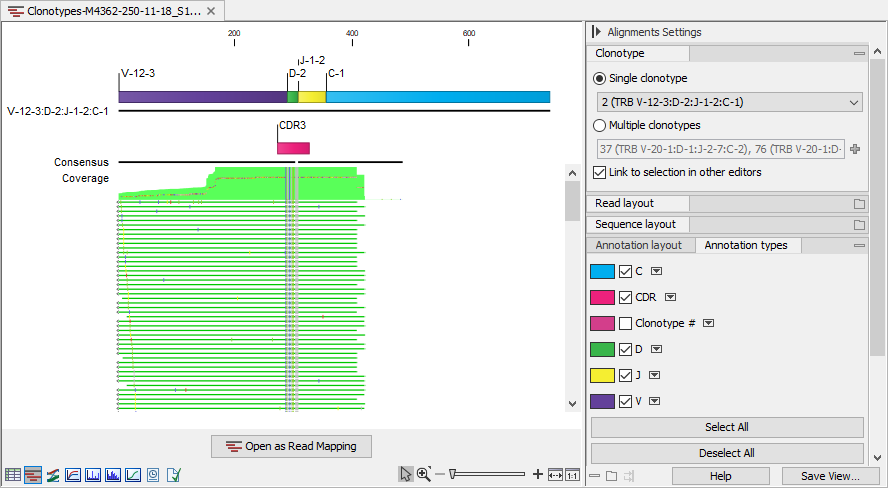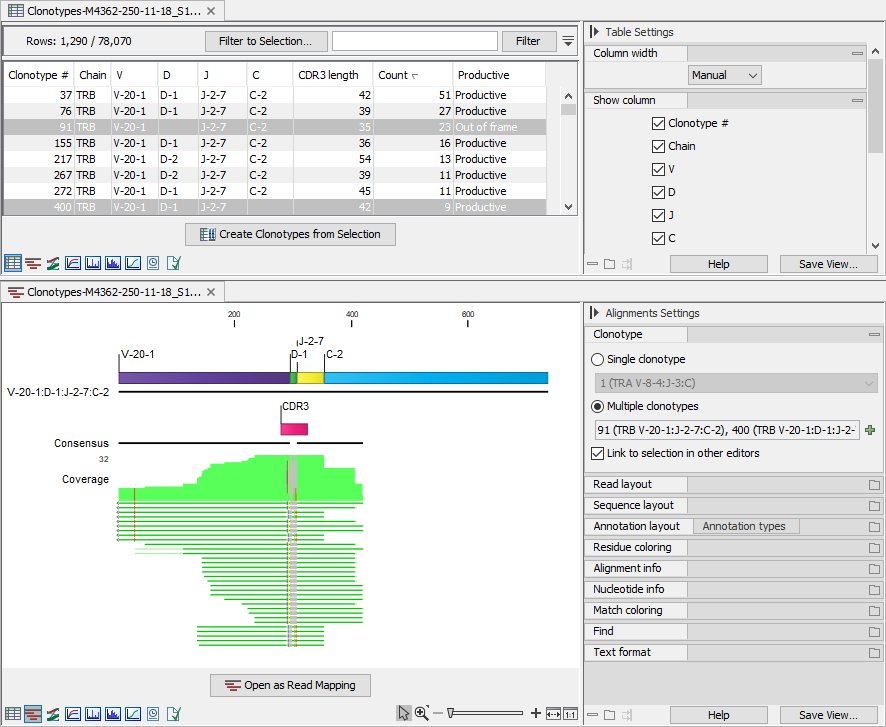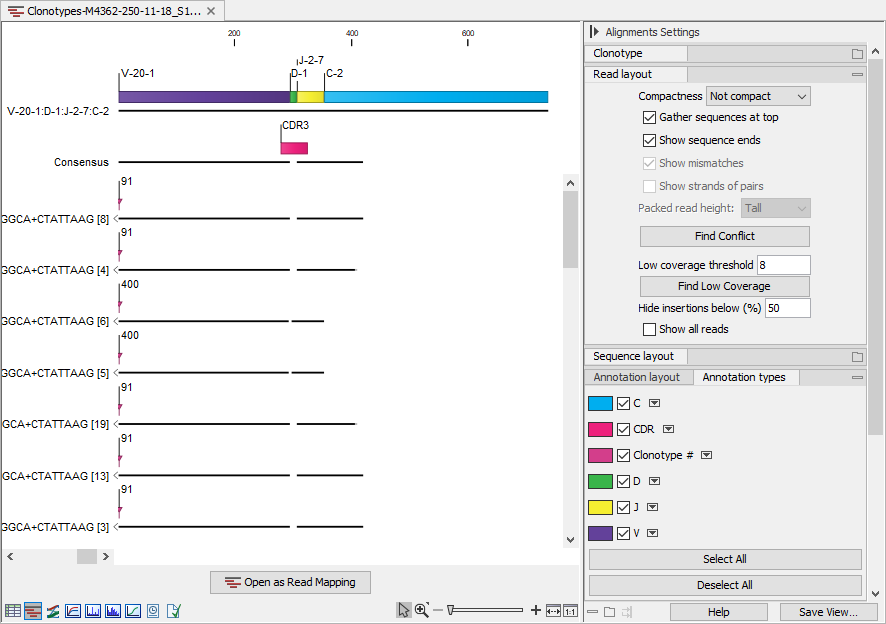Alignments for Clonotypes
The alignments view (

Figure 7.11: Read mapping for a TRB clonotype. V, D, J and C segments are annotated on the reference sequence and the CDR3 is annotated on the consensus.
The alignment contains:
- The reference sequence consisting of the identified V(D)JC segments. Annotations indicate the location of the different segment types. For clonotypes with ambiguous segments, only one of the identified segments is used.
- The consensus sequence with an annotation indicating the CDR3 region.
- The aligned reads.
Various settings can be configured in the side panel, see http://resources.qiagenbioinformatics.com/manuals/clcgenomicsworkbench/current/index.php?manual=View_settings_in_Side_Panel.html.
For further processing, the alignments can be opened and saved as a stand-alone read mapping by using the "Open as Read Mapping" button.
The clonotypes for which the alignment should be shown can be selected from the drop-down menus in the side panel, or from the clonotype table (Clonotypes Table) while using a split view, see figure 7.12.

Figure 7.12: Clonotypes split view. Top: multiple clonotypes sharing the reference segments are selected in the table view. Bottom: Alignment view for the clonotypes selected in the table view.
Alignments for multiple clonotypes can be shown together provided that they have the same V and J segments and the D / C segments are not contradictory: either the D / C segment is identified and the same, or it is missing (figure 7.12).
When viewing alignments for multiple clonotypes, it can be useful to change "Compactness" to "Not compact" and tick the "Clonotype #" annotation from the side panel. This way, it is easy to see the clonotype assigned to each read, figure 7.13.

Figure 7.13: Alignment view for multiple clonotypes where "Compactness" is set to "Not compact" and "Clonotype #" is ticked.
Figure 7.12 shows an alignment for two clonotypes. Some of the reads do not span past the J segment and using the "Clonotype #" annotation, we can confirm that these reads belong to clonotype # 400, which is the clonotype without the C segment (figure 7.13). The two clonotypes do not share the D segment and have different CDR3 sequences. Using the alignment view (figure 7.12), it is straightforward to spot the differences between the two CDR3 sequences.
